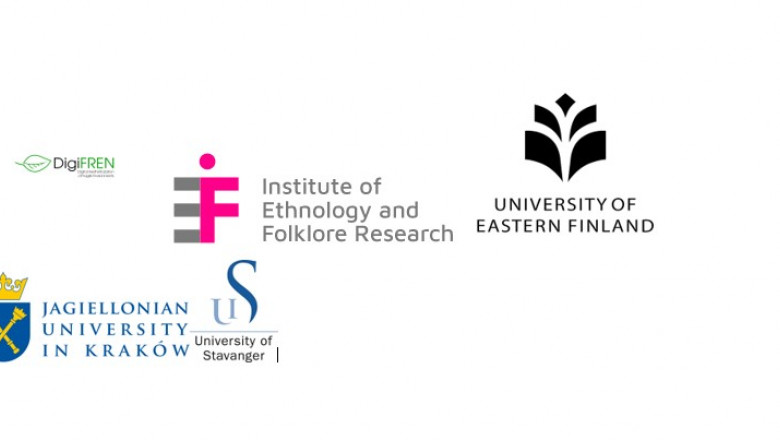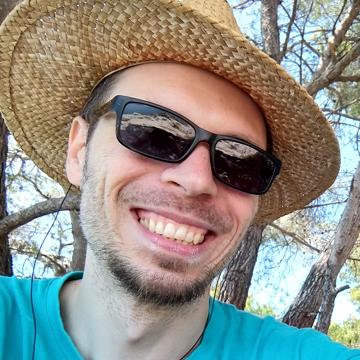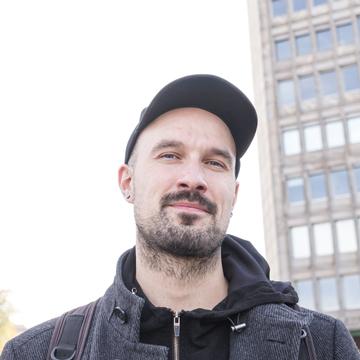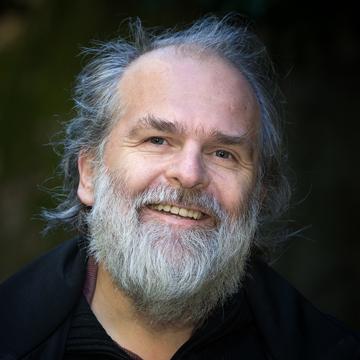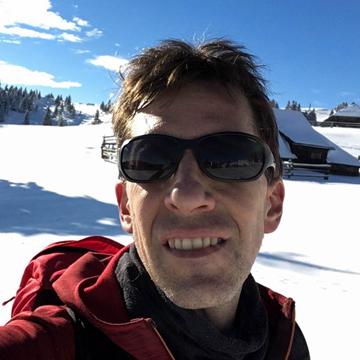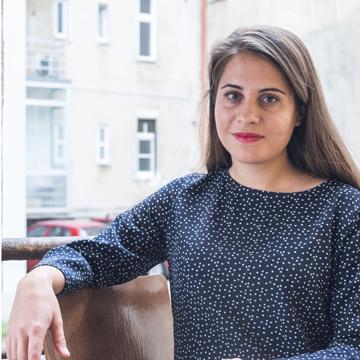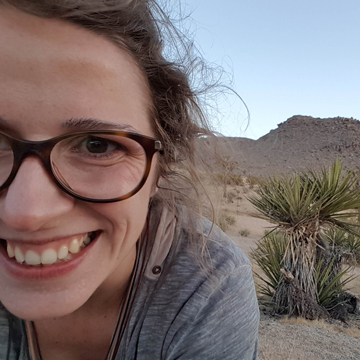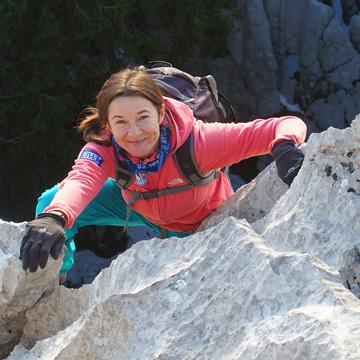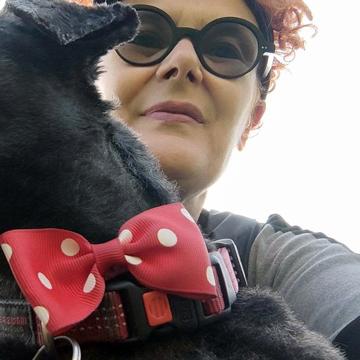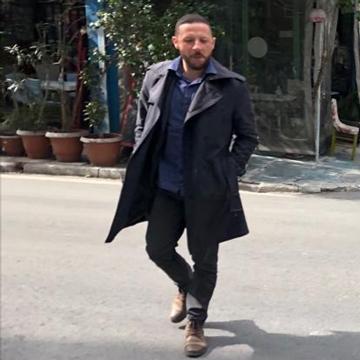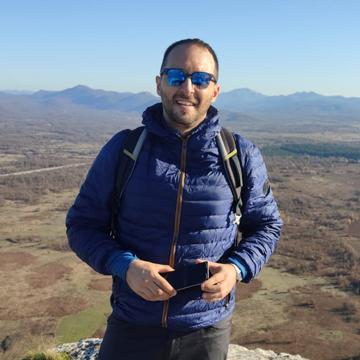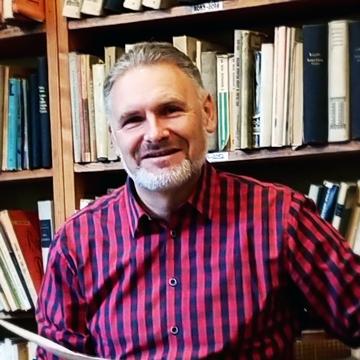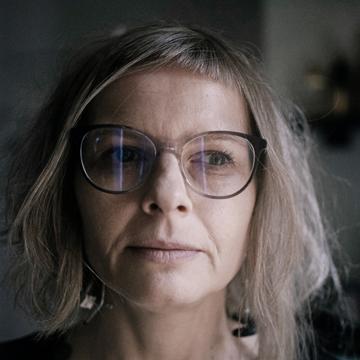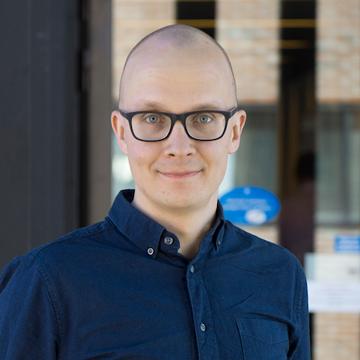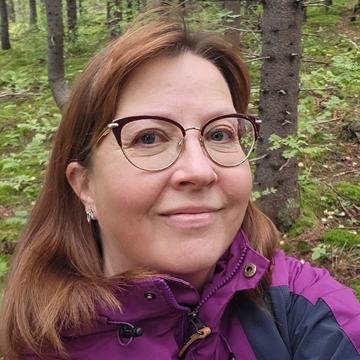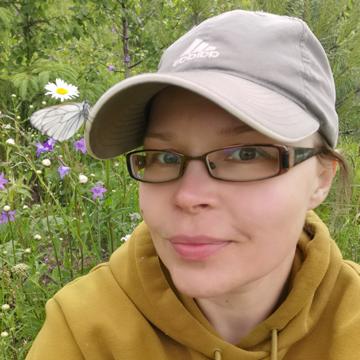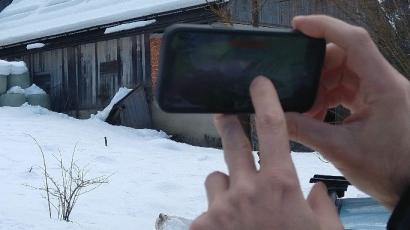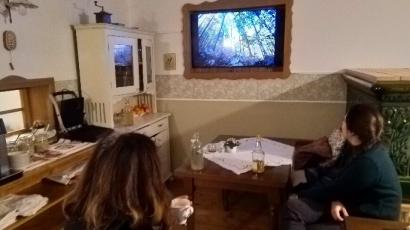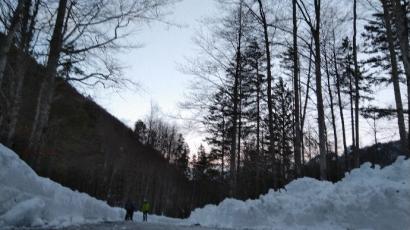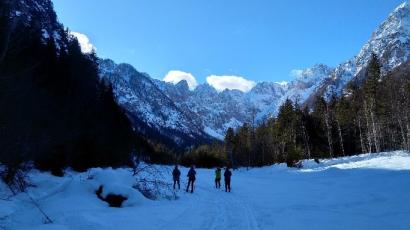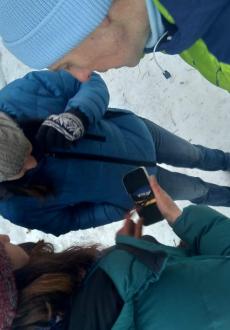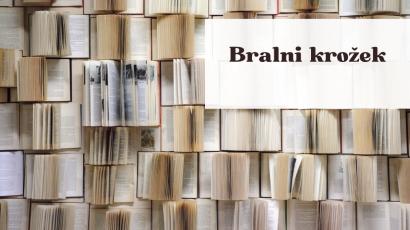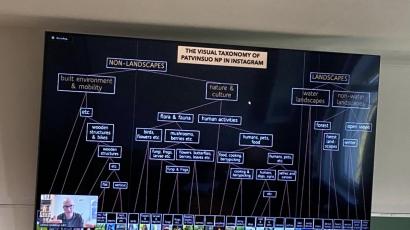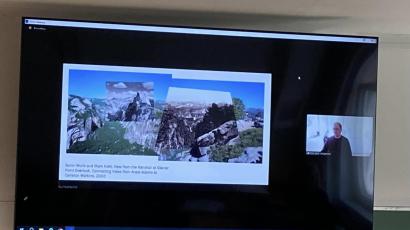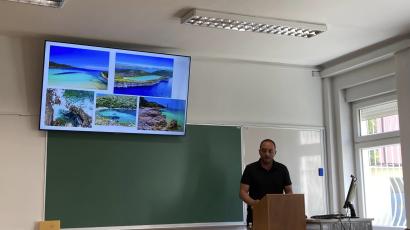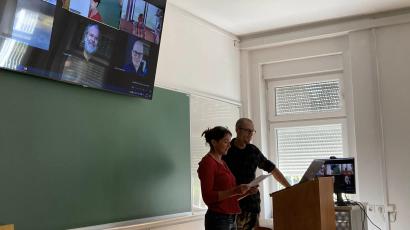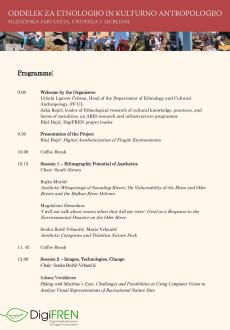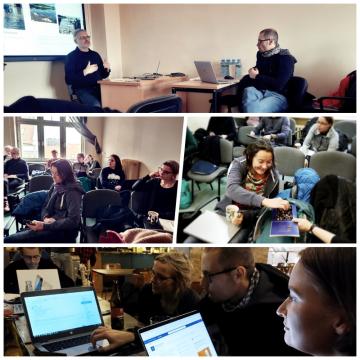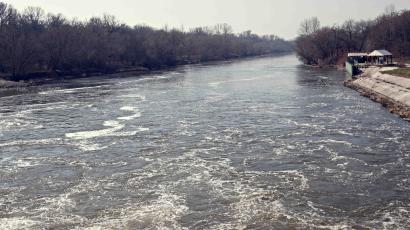

DigiFREN - Digital Aestheticization of Fragile Environments / Digitalna estetizacija ranljivih okolij
Ko se danes v gorah, ob morju in v gozdovih ozremo naokoli težko najdemo ljudi, ki ne bi tapkali po svojih pametnih telefonih, upravljali brezpilotnih letalnikov, uporabljali nosljivih kamer ali drugih pripomočkov za digitalni »zajem« in »nadgradnjo« izkušenj. Razmerja, ki jih ljudje vzpostavljamo s svojimi okolji, so v večji meri posredovana z digitalnimi tehnologijami in mediji. Cilj projekta DigiFREN - Digitalna estetizacija ranljivih okolij je preučiti ta transformativni moment v evropskem kontekstu.
Čeprav se v času »pregrevanja« (Eriksen 2016) zdi še posebej pomembna, digitalna estetizacija (znotraj) krhkih okolij ostaja etnografsko relativno neraziskana. V humanistiki so o njej razpravljali predvsem v kontekstu teorije umetnosti, (novih) medijev in filozofiji. Izhajajoč in nadgrajujoč te razpravo bo DigiFREN digitalno estetizacijo naslovil kot se »spontano« odvija v vsakdanjem življenju.
Zgodovinsko in etnografsko utemeljena raziskava se osredija na digitalno estetizacijo (znotraj) krhkih okolij, se pravi na to, kako digitalni mediji in tehnologija preoblikujejo percepcijo, senzibilnosti, pojmovanja in prakse. Raziskava poteka v Sloveniji, na Hrvaškem, Finskem, Norveškem in Poljskem ter tako upošteva kulturno in ekološko raznolikost Evrope.
DigiFREN je pionirski projekt, ki se etnografsko in primerjalno loteva estetizacije okolja (in okoljskih sprememb) v digitalizirani Evropi. Razširja uveljavljene metodološke strategije, kot je opazovanje z udeležbo, ter uvaja eksperimentalno metodo senzo-digitalne hoje. DigiFREN je zasnovan za preučevanje spreminjajočih se in vse pomembnejših odnosov med spreminjajočimi se kategorijami človeka, tehnologije in okolja. Raziskava bo to bo prispevala uvide, relevantne ne le za antropologijo, zgodovino, kulturne in senzorične študije, ampak tudi za kulturno geografijo, okoljsko estetiko in medijske študije, njene ugotovitve pa bodo prispevale k učinkovitejšemu upravljanju in zaščiti krhkih okolij.
SLOVENIA
PL Blaž Bajič is a researcher at the Department of Ethnology and Cultural Anthropology, Faculty of Arts, University of Ljubljana, where, in 2017, he received his PhD. As a postdoctoral researcher in cultural studies at the School of Humanities of the University of Eastern Finland (2017-2021) he participated in the SENSOTRA project (ERC-2015-AdG 694893). His areas of interest include anthropology of the senses, popular culture and leisure, everyday life, anthropology of space and place, urban anthropology, globalization, anthropology of art and creativity, digitization, ecology, epistemology, etc. He also participated in the TRACES (H2020-EU.3.6.-693857; 2016-2019) and CSI CustomDigiTeach (KA226-050D8E8E; 2021-2023).
Recently, he co-edited the Senses of Cities: Anthropology, Art, Sensory Transformations (with Rajko Muršič and Sandi Abram; University of Ljubljana Press, 2022), Views of the Three Valleys (with Ana Svetel and Veronika Zavratnik; University of Ljubljana Press, 2021), Close-ups: Youth, the Future and Imagining Development in Solčavsko (with Ana Svetel and Veronika Zavratnik; University of Ljubljana Press, 2022) and Sensory Environmental Relations: Between Memories of the Past and Imaginings of the Future (with Ana Svetel; Vernon Press, 2023).
In 2021, Bajič was awarded the Emerging Scholar Award for outstanding early-career researchers by OnSustainability Research Network. He is also the current president of the Slovenian Ethnological and Anthropological Association KULA.
Sandi Abram holds a PhD from the University of Eastern Finland. Between 2017-2021 he participated as doctoral researcher in the ERC-funded project SENSOTRA - Sensory Transformations and Transgenerational Environmental Relationships in Europe 1950-2020 (ERC-2015-AdG 694893). Between 2012-2020, he was a member of the editorial board of the Journal for the Critique of Science and Imagination, and New Anthropology, and is currently a member of the Scientific Committee of the Street Art and Urban Creativity Journal. In 2021, he co-edited (with Blaž Bajič and Rajko Muršič) the book Senses of Cities: Anthropology, Art, Sensory Transformations (Ljubljana University Press). Since 2022, he also participates as a postdoctoral researcher in DigiFREN- Digital Aestheticization in/of Fragile Environments and ECSEuro - Enacting Citizenship and Solidarity in Europe “From Below”: Local Initiatives, Intersectional Strategies and Transnational Networks. His research interests are in the fields of aestheticization, sensory and urban studies, non-institutional creative practices, multimodal and collaborative ethnography. In 2020 he was awarded the Finnish Cultural Foundation scholarship.
Rajko Muršič is professor of ethnology/cultural anthropology at the University of Ljubljana, Faculty of Arts, Dept. of Ethnology and Cultural Anthropology. His research focuses on anthropology of popular music, theories of culture, epistemology, urban anthropology, methodology of anthropological research, sensory studies, digital ethnography, the use of algorithms, etc. His regional interests comprise Slovenia, Central and South-Eastern Europe (fieldwork in Slovenia, Poland, North Macedonia, Germany, and Japan).
He published eight monographs (all in Slovene) and co-edited eleven collections (six in English). He served as a member of the Executive Committee of the IUAES and a president of the Slovenian Ethnological and Anthropological Association Kula. He was initial editor of the monograph series Zupanič’s Collection.
As the principal researcher he completed two national research projects. Recently, he was engaged as an expert researcher in the ERC project Sensotra (Sensory Transformations and Transgenerational Environmental Relationships in Europe, 1950-2020) at the University of Eastern Finland (2016-2021), and he is active in the project B-Air (Art Infinity Radio - Creating Sound Art for Babies, Toddlers and Vulnerable Groups) led by Radio Slovenia (2020-2023). He is as well the leader of the partner’s team in the Erasmus+ project Happy (Qualitative Research in Higher Education Teaching Approaches for Sustainability and Well-being in Bhutan), led by the Free University in Amsterdam. Since 2022, he participates in two projects, financed by the programme Chanse: Reimagining Public Values in Algorithmic Futures and Digital Aestheticization in/of Fragile Environments.
His recent works include Glasbeni pojmovnik za mlade (Music Glossary for the Youth), 2017; Sounds of Attraction: Yugoslav and Post-Yugoslav Popular Music (co-editor Miha Kozorog), 2017; Občutki mest: antropologija, umetnost, čutne transformacije (Senses of Cities: Anthropology, Art, Sensory Transformations; co-editors Sandi Abram and Blaž Bajič), 2022.
Jaka Repič is an associate professor of cultural and social anthropology at the Department of Ethnology and Cultural Anthropology, Faculty of Arts, University of Ljubljana. He completed his PhD thesis in 2006 with a study of transnational migrations between Argentina and Europe, with a special focus on the Slovenian diaspora in Argentina and return mobilities. He teaches courses on the methodology of ethnology and cultural anthropology, current debates in social and cultural anthropology, urban anthropology, and ethnology of Australia and Oceania.
He was a visiting professor at Universidad Autónoma de Barcelona (2019-20) and Universidad de Buenos Aires (2010-11, 2015, 2017, 2023). He is currently the leader of a research programme Ethnological research of cultural knowledge, practices and forms of socialities (2022-2027).
Jaka Repič’s research interests include diaspora studies, social memories, urbanisation and spatial studies, and anthropology of art. He has published two books in Slovenian (“Tracing roots”: Transnational Migration between Argentina and Europe and Urbanization and Constitution of Ethnic Communities in Port Moresby, Papua New Guinea). His recent publications include an edited volume Moving Places: Relations, Return and Belonging (co-edited with Nataša Gregorič Bon, Berghahn books, 2016) and a special issue on Art and Migration in the journal Two Homelands. In the past years he has also focused on the environmental changes and spatial practices in the Slovenian Alps.
Ana Svetel works as a researcher at the Department of Ethnology and Cultural Anthropology at the Faculty of Arts and at Institute for Innovation and Development of University of Ljubljana. Her research interests include anthropological studies on landscape, environment, perception, remoteness, seasonality, weather, luminosity and naming. She conducted ethnographic fieldwork in northeastern Iceland and Slovenian Alps. She is a co-chair of Young Scholars Working Group in the International Society for Ethnology and Folklore (SIEF) and a member of the editorial boards of the Bulletin of the Slovene Ethnological Society Library series and journal Svetovi / Worlds. In 2022, Svetel was awarded the Emerging Scholar Award for outstanding early-career researchers by OnSustainability Research Network.
Veronika Zavratnik is a teaching assistant and researcher at the Department of Ethnology and Cultural Anthropology, Faculty of Arts, University of Ljubljana, where in 2023 she completed her PhD on footwear in everyday life. Since 2021, she also works as a researcher at the Institute for Innovation and Development of University of Ljubljana (IRI UL). Her broader research interests include material culture, digitalization, environment, sustainability, applied anthropology. She is currently involved in several projects related to digitalization, energy, and innovative teaching approaches. Recently, she co-edited Handicrafts in Slovenia: Contemporary Challenges and Perspectives (with Mateja Habinc; University of Ljubljana Press, 2022), Views of the Three Valleys (with Blaž Bajič and Ana Svetel; University of Ljubljana Press, 2021), and Close-ups: Youth, the Future and Imagining Development in Solčavsko (with Ana Svetel and Blaž Bajič; University of Ljubljana Press, 2022). She is the managing editor of Svetovi/ Worlds: Journal for Ethnology, Anthropology and Folkloristics, published by University of Ljubljana Press. In 2020, she was awarded the Emerging Scholar Award for outstanding young scholars in the field of sustainability by the OnSustainability Research Network.
CROATIA
PI Sanja Đurin is a senior research assistant at Institute of ethnology and folklore research in Zagreb, Croatia. She obtained a B.A. in Philosophy and General Linguistics from Faculty of Humanities and Social Sciences, University of Zagreb, and M.A. in Social Anthropology (case study: prison Lepoglava) from Institutum Studiorum Humanitatis (ISH), Slovenia. Winner of HESP stipend for PhD study. Her doctoral thesis (obtained at Institutum Studiorum Humanitatis (ISH), Slovenia) is analyzing the politics of sexuality in Croatia across different political regimes (1941-2000).
Through the lens of social anthropology and cultural studies, so far she was researching different social niches characterized by uneven power distribution and its consequences – subjugation and marginalization, i.e. discursive production of marginality. Her target were social, gender and other minority items as well as subjugated identities (prisoners, waitresses, gay people) and public policies. She collaborated on several domestic and international projects and has extensive experience in field work in Germany, Chile and Argentina, which encourages her to constantly question established research methods in anthropology. In recent years, her research work is focused on adventure and outdoor activities in everyday life, through the prism of climate change and environmental disasters and in the context of fourth (digital) industrial revolution.
Senka Božić-Vrbančić is a Professor in Anthropology at the University of Zadar, Croatia. She holds a PhD in Anthropology from the University of Auckland, New Zealand. She has worked at the University of Melbourne, Australia (McArthur Research Fellowship 2007-2010), Center for Sociology and Cultural Studies in Lviv, Ukraine and Institute for Anthropological Research, Zagreb, Croatia. Her work spans the fields of anthropology, cultural and visual studies with an emphasis on affective components of belonging. Her work has been published in various journals and edited collections including Oral Histories and Public Memories (Temple University Press 2008) and Waiting (Melbourne University Press, 2008). She is the author of two books Tarara: Croatians and Maori in New Zealand - memory, belonging, identity (Otago University Press 2008, 2018) and Hitchcockian gaze: a paranoid reading of contemporary culture (Jesenski & Turk, 2017). She is currently finishing a book on the precariousness as a social condition based on an ethnographic research of everyday work on digital platforms in Croatia and the structures of feeling associated with them.
Mario Katić is Associate Professor at the University of Zadar, Department of Ethnology and Anthropology. His main areas of interest are pilgrimage, folklore and death studies; urban anthropology; and research methodology. He is co-editor of Pilgrimage, politics and place-making in Eastern Europe (Routledge, 2014), Pilgrimage and sacred places in southeast Europe (Lit Verlag, 2014), Military pilgrimage and battlefield tourism (Routledge, 2017). Since 2020 he has been the PI of the research project Adriatic Maritime Pilgrimages in Local, National and Transnational Context (Croatian Science Foundation).
Tomislav Oroz is associate professor at the Department of Ethnology and Anthropology, University of Zadar. He holds a MA degree in ethnology and cultural anthropology and history from the University of Zagreb. At the same University he obtained a Ph.D. in ethnology and cultural anthropology. His teaching activities at his home university include several courses both on the undergraduate and graduate level (Anthropology of the Mediterranean, Ethnocultural processes in Southeastern Europe, Cultures of Memory and Experience of Temporality, etc.).
His research interests explore the intersection of memory studies, island studies and Balkan studies with special emphasis on the problems of island temporalities, problems of belated modernity and aestheticization of island environments. His publications include the monograph Gdje si bio 1573? Lica i naličja Matije Gupca u praksma sjećanja [Where were you in 1573? Diverse Faces of Matija Gubec in Memory Practices] (2018) for which he won Milovan Gavazzi yearly award of Croatian Ethnological Society. With Miranda Levanat-Peričić he co-edited the volume Liber monstrorum balcanorum: čudovišni svijet europske margine [Liber monstrorum balcanorum: monstruous world of European periphery]. Currently he serves as the head of Department of Ethnology and Anthropology at his home university (2022-2026). He is engaged as co-opted member of executive board of ISISA (International Small Island Studies Association). He is PI of university research project A Network of Island Temporalities– Multidisciplinary Research of Experiences of Temporalities on the Islands of Dugi otok and Kornati.
POLAND
PI Marcin Brocki is an associate professor at Jagiellonian University in Krakow (Poland). His research interests revolve around the theory and methodology of anthropological research, semiotics, community studies, social and economic transformation, and anthropology of the body, but he also focused in his writings on such topics as the social construction of landscape or participatory research. He conducted his fieldwork in diverse sites in southern Poland (on transition and society and rapid industrial development and its impact on the local community) and did anthropological surveys in Zimbabwe (on “informal social protection systems” within the framework of the UNDP program).
Magdalena Sztandara is an anthropologist working at the Institute of Ethnology and Cultural Anthropology at the Jagiellonian University in Krakow. Her research interests include issues of performative ethnography, visual anthropology, feminist ethnography, methodology of ethnographic research, and teaching anthropology. In recent years, her research has focused on the themes of disobedience and disloyalty in (post-)Yugoslav space, restorative justice and ageing and activism. For several years, she has been leading international educational projects based on a research-based teaching technique that combines the teaching of anthropology with the theory and methodology of ethnographic research. As part of her authorial ethnographic-performative laboratories, she conducted projects on intimacy and familiarity in urban spaces, gentrification, activism, and ageing.
FINLAND
PI Juhana Venäläinen works as an Associate Professor of Cultural Studies at the University of Eastern Finland, Joensuu. His research topics range from transformations of work and everyday economic thought to multisensory ethnography and environmental relationships. An important thread between these topics – and already taking shape in his PhD thesis (2015) – has been the ambition to explore the diverse roles and contexts of the “commons” in creating economic value within contemporary capitalism. Venäläinen has published research articles and edited books and journals’ special issues about precarious work, affect theory, economic cultures, and the epistemologies of cultural studies. His research on the commons has been awarded by the Kone Foundation “Academic Pen of the Year” for the best Finnish research article in social sciences (together with Tero Toivanen). Recently, Venäläinen contributed to the ERC AdG project “SENSOTRA” in developing the notion of the sensory commons and devising the ethnographic method of sensobiographic walks. In DigiFREN, he leads Work Package 2 on “Navigating Aestheticization”.
Kirsi Laurén, Adjunct Professor, works as a Senior Researcher of Cultural Studies in the School of Humanities, University of Eastern Finland (UEF). She represents disciplines of folklore studies and cultural anthropology. Her research interests include e.g., cultural environmental research, research on cultural change, narrative analysis, anthropology of senses, oral history research, traditions and cultural heritage, and humanistic border studies. She leads the Mire Trend research project (2020–2023 funded by the Finnish Kone Foundation) in UEF. In DigiFREN she studies the implementation of digital aestheticization in the context of protected mires and peatlands in Eastern and Northern Finland.
Tiina Seppä is an Adjunct Professor of Folklore Studies at the University of Eastern Finland, senior researcher at School of Humanities, UEF Finland. Her research interests include the folklore collection and construction project, colonial processes, and immaterial conditions (such as affections and economy) in folklore collecting process and, recent years, interspecies relations in folklore and human-environment relationships. She is president of the Finnish Folklore Society and has just received funding for the project "Wandering in the woods. Forest-human relations in archived oral folklore" from the Kone Foundation. Seppä has also written his research in the form of art: more specifically, radio plays for the Finnish Broadcasting Company. She is interested in the experimental artistic methods in research. She also enjoys nature, forests and bogs, and records these experiences on her mobile phone, as well as the catches from her mushroom foraging trips.
Sanni-Maaria Puustinen works as a research assistant at School of Humanities in University of Eastern Finland. She is currently finishing her Master's Thesis in folklore studies, and her interests goes towards human-animal studies and human-environmental relationships. These themes are also embedded in her work as a Fine Artist. Her work in the field of Art includes multisensorial and community-engaged art, as well as exhibitions and public artworks. She lives in the rural area on a small farm, raising sheep and foraging in the surrounding forests and lakes.
NORWAY
PI Finn Arne Jørgensen is a professor of environmental history at the Department of Cultural and Linguistics. In his research, he focuses on encounters between technology, nature, and culture. In the last couple of years, he has also worked extensively with digital media and digital cultural heritage. In his previous position as an associate professor in technology and environmental history at Umeå University (2010-2017), he was appointed as a meritorious teacher in 2016. In 2021, he was also appointed as a meritorious teacher at the University of Stavanger. He is happy to guide master's students within his areas of competence and interest - contact him for an overview of possible topics and proposals for assignments.
Much of his research takes place within the framework of externally funded research projects: In the period 2019-2023, he is particularly busy with the project "Locative Technologies and the Human Sense of Place" which he received from the Research Council of Norway's FRIPRO programme. Here he collaborates with Karen Lykke Syse at the Center for Environment and Development, UiO. In addition, he leads the EU project EnviroCitizen, where seven European partners investigate how citizen science within ornithology, such as bird counting and ringing, can contribute to increased environmental commitment and green citizenship. The project runs from 2020-2023. At the turn of the year 2022/2023, the DigiFREN (Digital Aestheticization of Fragile Environments) project will start, a large European collaborative project on digital technologies and changing landscapes, funded by CHANSE. At UiS, historical re-photography will be used as an input into a historical study of Sørmarka.
Finn Arne Jørgensen's latest books are Silver Linings: Clouds in Art and Science (Museumsforlaget 2020), edited together with Dolly Jørgensen, and Recycling (MIT Press, 2019).
Senso-digital walking methodological companion
Across diverse European environments, one can readily observe that how people engage with their surroundings have changed dramatically. In the mountains and the forests, along riverbanks and seacoasts, it is hard to find anyone who is not tapping on their smartphones, flying drones, or using wearable cameras, or other digital gadgets to “capture” and augment their experiences. The objective of Digital Aestheticization of Fragile Environments – DigiFREN is to study this transformative chapter in the history of environmental relations in Europe. (DigiFREN 2022)
Taking augmented photos in Lograska dolina. (photo: Blaž Bajič)
Marvelling at the photos taken by our interlocotur during one of her previous outings. (photo: Blaž Bajič)
The question, then, is a simple one: how? How are we to engage with the ubiquitous, yet almost impalpable process that we have termed digital aestheticization? To answer this question somewhat satisfactorily we would have to go into some detail about what precisely we mean by “digital aestheticization”, as well as its socio-historic, cultural, and technological conditions. We will do this in one of the upcoming entries. Presently, however, the aim is – based on the preliminary walks conducted during a recent visit to Solčavsko – simply to take the first step in outlining an emergent method (or, at the very least, a new twist on an established method), namely senso-digital walking.
A quick sketch of how we envisioned the sensory-digital walking method (SDW) is in order. With SDW we imagined a “hybrid” (sensu Przybylski 2021) experimental method, inspired by mobile methods in the ethnographic study of sensory experience and technology (cf. Bajič and Abram 2019; Jørgensen 2017; Venäläinen, Pöllänen, and Muršič 2020). SDW’s express aim is to engender reflection at the “interface between the physical and the digital” (Dufva and Dufva 2019: 23).
In recent years, walking attained a (proto-)methodological status as it affords dynamic, multisensory encounters with the environment, and it was noted that walking together with others can help us “'creatively construct correspondences' [Okely 1994] between our own and others' experiences” (Pink 2015: 47). While there are other methods that utilize walking, we opt for the development of senso-digital walking, because, drawing on recent considerations of the “post-digital world” (Berry 2014), we estimate that none provide for a sufficient focus on the overlap of sensory perception, on the one hand, and the uses of digital media and technologies, on the other. With SDW, we enable temporally and spatially focused ethnographic study of the interrelatedness and in-betweenness of the digital and the non-digital, online, and offline engagements (Przybylski 2021; Zavratnik and Svetel 2021; Podjed and Muršič 2021). While other forms of mobility are far from irrelevant when it comes to digital aestheticization, we – initially, at least – settled for walking for reasons of its historical connections to aesthetic perception, contemporary commonplaceness (popularity as an outdoor leisure practice, in fact), research practicality, and several researchers’ experience with walking methods in their past work. In any case, walking should be understood as a generic term encompassing diverse modes of movement (and sensory and possibly digitally mediated engagement) within an environment, from cross-country skiing and climbing to kayaking and cycling.
The plan is to ask the research participants - whilst walking through an environment together with a researcher, and in contextually suitable ways - to discuss their uses of digital technologies before, during, and after their activities in the “environment itself”, as well as the relationships between (their experiences of) “real” and “digitally aestheticized” environments. Both the perceived similarities and differences are to be addressed, as are the memories of, and anticipations regarding the environments, and the impressions and feelings these may have contributed to. Moreover, we have imagined that SDW can, when and where appropriate, incorporate techniques such as photo-elicitation and rephotography, i.e., using historical, contemporary, and/or combined images as an inspiration for reflection. Importantly, throughout the walks, the participants will be encouraged to use any gadget as they normally would and to describe how they may affect their sense of place, belonging, and identity. (Of course, much like with “digital aestheticization” a lot more could be and will be said about senso-digital walking’s “meaning” and its background (mobilities turn, the proliferation of go-along methods, etc. in the humanities and social sciences)).
Now, even if relatively simple as far as the practicalities go, developing anything approximating a new method is a lengthy and complex journey (and much more than just ambitious words are needed!), that begins – surprise, surprise! – with a single first step. The first step (both figurative and literal first step, in our case) was precisely what we were aiming for when members of the Ljubljana- and Zagreb-based research teams recently visited Solčavsko region in the Kamnik-Savinja Alps in Northern Slovenia. The SDW protocol is at this point in the research process a matter of debate, even if it is already evident that some leeway for adjustment to each context and improvisation on the go must become its built-in feature.
Given that some of us have been conducting ethnographic fieldwork in the region for several years now, we were confident in our choices of the first two “official” research participants – and both experiences indeed proved to be instructive, each in its own right. Both walkers are locals, one from Robanov kot, the other from Logarska dolina, i. e. two of the major valleys of Solčavsko, both work in tourism, and both are avid photographers, even if somewhat less enthusiastic about sharing them, and in the process promoting their businesses, via social media (since they are doing well enough even without it), and both women were asked to choose a path that they find exciting, are feel are knowledgeable about (at least to some extent). Both walks took place during a stretch of rather cold weather, with copious amounts of snow and ice – these may appear as extra-methodological occurrences, accidental events with no bearing on methodological considerations. These (and some other) similarities notwithstanding, the two walks proved to be immensely different – both regarding the topics discussed (these, we leave to be reflected upon at another opportunity) and regarding the very “form” of the exercise. With one walker it only made sense that we walk along a ploughed if somewhat icy road, and not along her favoured mountain path, since the interlocutor is recovering from an injury and the trail was all but inaccessible. With the other walker it was only possible to go by touring skis since there was simply too much snow and no ploughed roads in the valley we traversed.
Icy road in Logarska dolina at dusk. (photo: Blaž Bajič)
On the right: The ski cross party in Matkov kot. (photo: Blaž Bajič)
The mode of movement, naturally, set not only the tempo of movement but also how we “choreographed” the entire endeavour (so, as we can see, while the environmental and meteorological conditions can hardly be described as parts of the method as such they obviously connect to the form of each individual SDW, and can ostensibly serve a heuristic purpose as they are clearly important for the very subject of the study, as the conversations we had with our two walkers suggest). This proved to be crucial if we wanted to maintain a somewhat regular flow of conversation in the rather large group, too large of a group of researchers in fact (there were four of us!) and in each instant the single research participant. Of course, how this was done was a matter of conditions and affordances of the environment(s) and the technologies employed (see e.g., Ingold and Vergunst 2008), as well as bodily techniques. When walking, at least if the terrain one is moving through or if the width of the trail one is walking on allow it, it is not unusual for people to walk alongside one another. When ski touring, in contrast, moving abreast is more of an exception; skiers tend to move in line. (For this reason, especially, it was interesting to observe how the research participant moved laterally to ski alongside each of the researchers (one at a time), so we could talk and how at moments we would spontaneously stop simply to discuss this or that – again, something rather unusual in a ski touring context). Combined with the churching of the skis and the poles breaking the snow, skiing together accentuated the challenges “latent” in walking, that is, how to converse, how to attend together to the environment, how to reflect on the uses of digital technologies and media. Having said that, the difficulties mentioned should by no means be seen as reasons to discard modes of movement other than walking, such as ski touring, but also the aforementioned climbing, kayaking, cycling, and others – these are, especially in contexts of outdoor leisure, just as important socio-culturally and economically (if not more so), and if they bring with them challenges for an emergent go-along method it because they are testing the scope of the method. If anything, the predicaments are an argument for us to fully embrace them, as they bring us, even if in a somewhat “laboratory setting”, into direct contact with people and jointly experience the (digitally aestheticized?) environments.
Experiencing the (digitally aestheticized) environment while in the environment? (photo: Blaž Bajič)
Another important facet to consider is the length of the route and the sheer amount of knowledge, of one sort or another, entailed. Although relatively short in terms of distance, the walks were rather long in terms of duration. In other words, they were slow as far as movement goes, and intermittently “interrupted” by stops at key points.
Thus, as one might guess, despite the above-mentioned difficulties, the walks were indeed intensive, highly informative, and instructive endeavours. Although hoping that walks would be this productive, we still wanted to see, in these two experiments, how they would turn out without any proper recording equipment and protocols. We wanted to start with a clean slate, so to speak. Now, if there is one key takeaway to be made, it is that recording can be helpful (duh!). However, apropos recording technologies it must be said that these should be selected carefully, especially if used in conditions and contexts such as those mentioned above. For example, the kind of body-mounted cameras used in the SENSOTRA project (see https://blogs.uef.fi/sensotra/), in which several DigiFREN research team members participated, would probably prove to be simply too cumbersome. Perhaps even more importantly, even with these short walks (or walk-interviews?) too much has been said and done for us to remember everything. One can only imagine what would it be like after hours- or even days-long hike (which is a real possibility in Solčavsko)!
So, to sum up, here are the crucial facets of SDW that need further consideration – both regarding the method as such, and any individual walk:
- who are we walking and talking with and why;
- the environmental and meteorological conditions and how they may connect to the form of the SDWs (as well as their importance for the very subject of the study);
- the give and take that the decrease and increase in the number of researchers participating;
- the technologies involved in the modes of movement and the affordances that are formed through this process.
References:
- Bajič, Blaž and Sandi Abram, 2019. Čutnobiografski sprehodi: med antropologijo čutov in antropologijo digitalnih tehnologij. Bulletin of the Slovene Ethnological Society 59(1): 27-38.
- DigiFREN 2022. Digital Aestheticization of Fragile Environments. Research proposal. CHANSE, Transformations: Social and cultural dynamics in the digital age.
- Dufva, Tomi and Mikko Dufva, 2019. Grasping the Future of the Digital Society. Futures 107: 17-28.
- Ingold, Tim and Jo Lee Vergunst, 2008: Ways of Walking: Ethnography and Practice on Foot. London and New York: Routledge.
- Jørgensen, Finn Arne, 2017. Walking with GPS. An Object Lesson. In: Thorpe, Jocelyn Rutherford, Stephanie and L. Anders Sandberg (eds.). Methodological Challenges in Nature-Culture and Environmental History Research. London and New York: Routledge, 284-297.
- Pink, Sarah, 2015. Doing sensory ethnography. London, Thousand Oaks New Delhi, and Singapore: Sage.
- Podjed, Dan, and Rajko Muršič, 2021. To Be or Not To Be There: Remote Ethnography During the Crisis and Beyond. Etnolog 31: 33-49.
- Przybylski, Liz, 2021. Hybrid Ethnography: Online, Offline, and In Between. Los Angeles, London, New Delhi, Singapore, Washington in Melbourne: Sage.
- Venäläinen, Juhana, Pöllänen, Sonja and Rajko Muršič. 2020. The Street. In: Holger Schulze (ed.). The Bloomsbury Handbook of the Anthropology of Sound. London: Bloomsbury, 225-240.
- Zavratnik, Veronika and Ana Svetel, 2021. “Coronacoaster”: Local Reflections on Digital Social Networks. Etnologické rozpravy (Ethnological Disputes) 28(1): 52-65.
News / Novice
Filozof David M. Berry trdi, da so digitalni mediji in tehnologije radikalno spremenili naša življenja: ne gre zgolj za to, da smo »nedigitalnemu« preprosto dodali »digitalno«, niti ne gre za to, da bi se nekako pomešala, temveč gre za to, da so se spremenili najosnovnejši parametri »nedigitalnega« samega. Tako tudi kadar govorimo o vidikih človeških življenj, ki se zdijo onkraj ali izven dosega računalnikov, mobilnih telefonov, algoritmov, svetovnega spleta in umetne inteligence, to počnemo v svetu, ki ga v njegovih temeljih zaznamujejo digitalne tehnologije in mediji. Ta svet Berry imenuje post-digitalni svet. Pa vendar: antropologija vedno znova dokazuje, da mnoštva človeških izkušenj ni moč izničiti – vselej-že bivamo v svetu mnogih svetov, kot bi dejala Marisol de la Cadena in Mario Blaser. A vprašanje, kako digitalno zaznamuje naše načine življenja, ostaja. Cikel srečanj Post-digitalni svetovi: okolja, prakse, identitete bo razčlenjeval življenja v post-digitalnih svetovih: kako se srečujemo z okolji, katerih bivamo, kaj nam pomenijo in kako so sama predmet sprememb? Kako so prakse in izkušnje vsakdanjega življenja v vse večji meri strukturirana skozi digitalno? Kako dojemamo same sebe in druge, tako individualno in kolektivno, ko se naše percepcije in diskurzi vzpostavljajo skozi igro ničel in enic?
Z bralnim srečanji Post-digitalni svetovi: okolja, prakse, identitete začnemo v sredo, 25. 10., ob 12.00-13.30. Srečanje bo potekalo v sobi 306 na Oddelku za etnologijo in kulturno antropologijo, Zavetiška 5.
Obravnavali bomo članek Giovanne Di Chiro (2008) Living environmentalisms: coalition politics, social reproduction, and environmental justice, Environmental Politics, 17:2, 276-298, DOI: 10.1080/09644010801936230.
V primeru vprašanj se lahko obrnete na koordinatorja srečanj Blaža Bajiča (blaz.bajic@ff.uni-lj.si).
Srečanja v sodelovanju s Slovenskim etnološkim in antropoloških združenjem KULA organiziramo v okviru projekta Digitalna estetizacija krhkih okolij (DigiFREN, 2022–2025).
The DigiFREN team, along with some other colleagues, convened at the symposium titled “Digital Aestheticization and its Challenges”. The event engendered many fruitful discussions, methodological insights, and examples from various locations from Europe and beyond. Additionally, it provided new comparative perspectives that will aid us in advancing the project further.
Join us at the symposium Digital Aestheticization and its Challenges. The event will take place on September 6 in person at the Department of Ethnology and Cultural Anthropology at the University of Ljubljana and online via Zoom.
Across diverse European environments, one can readily observe that how people engage with their surroundings has changed dramatically. In the mountains and the forests, along riverbanks and seacoasts, it is hard to find anyone who is not tapping on their smartphones, flying drones, using wearable cameras or other digital gadgets to “capture” and augment their experiences. This process could be described as one of digital aestheticization, a process of mediating, reframing, and decentring human perceptions through and by digital media and technologies and diverse “ordinary” aesthetic categories (Ngai 2010) (re)produced therein. Research on how digitalization affects environmental relations is particularly pressing in times of “overheating” (Eriksen 2016) as it pertains to broader issues of cultural and ecological sustainability.
Yet, digital aestheticization, taking place through an intra-relatedness and in-betweenness of digital and non-digital, online and offline engagements, words and senses, remains a diffuse and impalpable process. Thus, it challenges cultural anthropology, cultural studies, science and technology studies, human geography, environmental history, and other disciplines to develop judicious and discerning methodological and epistemological approaches.
The symposium on Digital Aestheticization and its Challenges aims to address the central question of how to grasp and understand this intricate process. This issue will be elaborated from methodological, epistemological/conceptual, and ethnographic perspectives. By bringing together scholars and practitioners from various disciplines, it will foster interdisciplinary dialogues, exchange insights, and develop innovative methodologies to unravel the intricacies of digital aestheticization in the context of the environment. We hope that together we can advance knowledge and contribute to sustainable approaches that navigate the ever-evolving relationship between digital technologies, aesthetics, and the environment.
Venue:
In-Person University of Ljubljana, Faculty of Arts Department of Ethnology and Cultural Anthropology Zavetiška 5, 1000 Ljubljana Lecture room: P3
Organisers:
Department of Ethnology and Cultural Anthropology, Faculty of Arts, University of Ljubljana; Institute of Ethnology and Folklore Research, Zagreb
Programme and organising committee:
Assist. Prof. Blaž Bajič (UL), RA Sanja Đurin (IEF), Assist. Ana Svetel (UL)
Programme:
- 9.00 Welcome by the Organisers Uršula Lipovec Čebron, Head of the Department of Ethnology and Cultural Anthropology, FF UL Jaka Repič, leader of Ethnological research of cultural knowledge, practices, and forms of socialities, an ARIS research and infrastructure programme Blaž Bajič, DigiFREN project leader
- 9.30 Presentation of the Project Blaž Bajič: Digital Aestheticization of Fragile Environments
- 10.00 Coffee Break
10.15 Session 1 – Ethnographic Potential of Aesthetics Chair: Sandi Abram
- Rajko Muršič: Aesthetic Whisperings of Sounding Rivers: On Vulnerability of the Mura and Oder Rivers and the Balkan River Defence
- Magdalena Sztandara: 'I will not talk about cranes when they kill my river'. Grief as a Response to the Environmental Disaster on the Oder River
- Senka Božič-Vrbančić, Mario Vrbančić: Aesthetic Categories and Telašćica Nature Park
- 11. 45 Coffee Break
12.00 Session 2 – Images, Technologies, Change Chair: Senka Božič-Vrbančić
- Juhana Venäläinen: Hiking with Machine’s Eyes. Challenges and Possibilities in Using Computer Vision to Analyse Visual Representations of Recreational Nature Sites
- Finn Arne Jørgensen: Environmental Change and Rephotography
- Tomislav Oroz: Putting Time in the Picture – Temporality and Digital Technologies
- 13.30 Lunch Break
15.00 Session 3 – Skiscapes, walkscapes, talkscapes Chair: Ana Svetel
- Mark P. Muniz, Matthew A. Tornow: Virtual Skiscapes, Climate Change, and Digitizing the Ephemeral Experience
- Sandi Abram: Walking the Post-Digital World: A Hybrid Method for Exploring the Environment and Digital Technologies
- Blaž Bajič, Sanja Đurin: Thinking Through (Senso-digital) Walking – A Dialogue
- 16.30 Concluding Remarks
On 6-8 March 2023, the first workshop (WS1) of the DigiFREN project took place at the Department of Ethnology and Cultural Anthropology in Wrocław, Poland. The workshop was attended by representatives from all project partners. The aim of the joint meeting was also to present the context in which the Polish team is conducting research as part of the project.
The workshop started with a presentation of the Polish team and the local field assistance leader. The first presentation explained the reasons for the location of the study area in the Oder Valley and was dedicated to sketching the general framework of the research. It presented the river as a sociocultural, political, and economic phenomenon and digitized images of it as an element of the discursive appropriation of the river by different stakeholders. The second presentation detailed the various research contexts (social, economic, spatial, cultural, environmental, and ecological) that will need to be taken into account. One of these attracted particular interest, namely the recent activities of the Oder Tribe and the struggle for recognition of the river’s legal personhood. The various actors important to the project who produce specific discourses on the Oder Valley are also presented. The presentations closed with detailed information on the planned research methods, ie. senso-digital walking, photo-elicitation and photo-voice, and rephotography. The third presentation showed the range of activities/research that the Association of Wroclaw Ethnology will undertake. The research focus will be on public and social media, visual discursive practices, social use of public space as well as discourses of ecologists, urban planners, investors, and other stakeholders. The researchers will use diverse ethnographic methods to gather data, such as netnography, critical discourse analysis, in-depth conversations, ethnographic observations and visual documentation.
The next points of the meeting were devoted to the core issue of the workshop, namely data management. Although this issue seemed to be of a purely technical nature, the detailed discussions on every aspect of the data management process seemed endless, effectively draining all participants. At times, minor issues grew into barriers that were difficult to cross and required lengthy negotiations. Although three working days ultimately proved sufficient to complete the planned tasks, they were unexpectedly exhausting.
The walk to the research sites, which took place on the second day of the workshop, also became challenging at times due to the not-so-cool weather, although it had a relaxing power in relation to the proceedings in the room. During the walk along the Oder Valley, all participants were able to see places under special protection from various stakeholders - environmentalists, city authorities or developers. This is important to the extent that Wrocław represents the popularity of the trend of cities to ‘turn back’ to rivers and riverside areas. The purpose of the joint walk was to provide an overview of the reasons for the choice of the field site, as well as the research problems and scientific objectives conducted under the DigiFREN project in Poland.
Despite the nuisance, everyone agreed that it was a very successful meeting, providing strong motivation for further work and collaboration.
